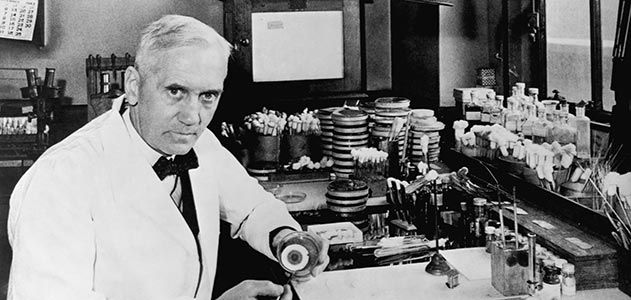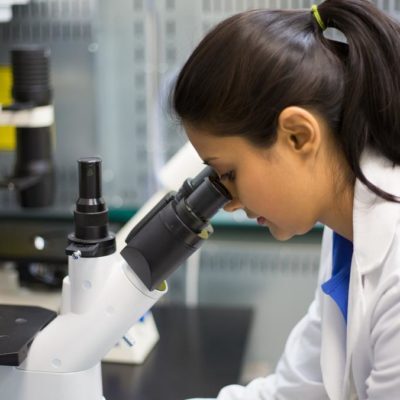Table of Contents
History of Computers in Pharmaceutical Research
Origin of Computers in Pharmaceutical Research
History of Computers in Pharmaceutical Research and Development. Twenty five years ago, one could not even imagine a computer at the desk of every scientist and company manager. Today, computers have become essential for storing, transmitting and managing information.
In the research and development industry computers are not only important for drug discovery, but also for the operation of laboratory equipments and analysis of experimental and clinical data.
Computers made their way into the pharmaceutical industry as early as the 1940s, however at that time they were used for accountancy and non scientific work.
As science advanced scientist began understanding the relation between the chemical structure of a molecule and its molecular properties including biological activity. This meant that if the molecular properties of any molecule could be calculated, the structure of that molecule could be predicted and then investigated in the laboratory.
Also at the same time concepts of how a drug exerts its biological activity through binding to some receptor in the body stemmed from Fischer’s lock and key hypothesis. Quantum mechanics took a leap forward in explaining the movement of electrons in molecules and how electronic structure impacts biological activity.
Mid 19th Century
In the mid nineteenth century papers began to be published mathematically relating chemical structure to biological activity. These developments finally led to the introduction to QSAR (Quantitative Structure Activity Relationships) which basically assigned molecular descriptors in describing biological activity. These molecular descriptors are nothing but a calculated or experimental numerical value that describes the chemical structure of that molecule. QSAR were the result of the engineering development of computers and their use. Thus the computer, which was initially designed to be used in the military and for accounting applications, gradually became a tool for scientific innovation.
Today computational biology stands at the forefront of innovation and has reduced the time for finding potential candidates by matching molecular structure databases against target molecules and finding an appropriate match thus generating a lead compound. With the advancement in computer technology and faster and more efficient supercomputers like the “Blue Gene” and “Red Storm” being made, the task is only made simpler.
Early 1960s
In the early 1960s drug discovery was by trial and error. At that time there were two main sources of therapeutic compounds. The smaller pipeline was natural products such as plants with medicinal properties and soil microbes. The major source was classical medicinal chemistry. The chemists at that time manually read literature of products patented by competitors and used their creativity and expertise to synthesize therapeutically active compounds. These compounds would then be tested by in house microbiologists and biochemists. The compounds were not only tested against its target but also screened for bioactivity against other targets for which research was being conducted at that time. The most potent compound discovered led to a series of other structures which were tested hence leading to the creation of a table comparing the potency and activity, which finally led to one compound that could be effectively called the drug and after development called a pharmaceutical product. However these methods involved time and cost and were inaccurate.
Companies such as Abbott, Schering-Plough, Upjohn and Dow Chemicals took the initiative to explore using computers for drug discovery. These initiatives involved either adding resources with computer proficiency or training in-house scientists on the new methodology. One of the first break-through in computational drug discovery was at Lilly which revealed the relationship between the calculated electronic structure of beta-lactam ring of cephalosporins and antibacterial activity. Even though some of the companies initiated these efforts, some of these companies lost out as they quit these efforts due to lack of management support. It was Lilly, whose persistence paid of as it established its base in such expertise.
The companies at that time invested in hardware and software from the money they gained from the sale of their products. Widely used models at that time included the IBM360 and the 370 series and input methods slowly advanced from punch cards to dumb terminals (terminals or PCs that had no local processing capability). Software was still written in FORTRAN, followed by the well known MMPI program used for molecular mechanics. Since molecular mechanics seems to predict the organic chemical structures more accurately than quantum mechanics (with bond lengths predicted correctly up to 0.01À), this program was an important development.
With these developments the pharmaceutical industry began transitioning to using molecular mechanics, QSAR and statistics rather then restricting to quantum mechanics.
However at the back of all this a war raged between the medicinal and computational chemists. The computational chemists emphasized that computationally it was easier to change a nitrogen atom to carbon or any other element or to attach a subsistent at any position in whatever stereochemistry which would make the compound more active. It was easy to change a six member ring to a five member ring and so on. The medicinal chemist argued, what good is a computer design if it is impossible to make?
Lilly took a positive step in this opening communication channels between the two groups and organized a series of workshops for the medicinal chemists to operate on computational programs to perform calculations on molecules. This was followed by Merck which conducted a similar workshop. Despite these initiatives the medicinal chemists were slow to accept what computers were able to provide. Sometimes they would go to the computational chemists for help with some of the research computationally like activity listing of a set of compounds and if the computational methods failed the medicinal chemists would start dismissing the idea of computational chemistry as a whole.
The truth is that computational techniques should be considered like another apparatus in a lab. Sometime it would give a positive result, and sometime fail like the rest of the experimental methods.
Early 1970s
In the 1970s two new computer resources were launched namely the Cambridge Structural Database (CSD) and the PDB (Protein Data Bank). Computational chemists found this as a boon as these databases would yield more therapeutically active compounds as more compounds were deposited into them.
The advancement came in the 1980s. The pharmaceutical companies noted the development of the IBM personal computer (PC), but it had DOS, which made it difficult to use. In 1984, the Apple Macintosh was introduced which set a new standard of user friendliness to the computer. These machines were great at word processing, graphics and managing small laboratory databases and suddenly all medicinal chemists took a liking to it. Also there were advancements on the software front which made most medicinal chemists enthusiastic about computers. One was the electronic mail.
This saw great advancement in communication and also with this one could easily connect to other computers and tap into large databases as the cabling and networking capability advanced. The second important development was development of certain software like ChemDraw which allowed chemists to quickly create two dimensional chemical diagrams which could be cut and pasted into reports, article and patents. The third important advancement was the ability to view 3D structures of compounds on a computer screen using either the ball and stick model or space filling representations of 3D molecular structures and this introduced a whole new field of “molecular graphics”.
Between 1975 and 1985
On a larger scale pharmaceutical companies started becoming aware of the potential for computer aided methods of drug design. According to a survey a few years later, 48 chemical and pharmaceutical companies in the US were using computer aided molecular design methods. Between 1975 and 1985 the number of computational chemists employed by these chemists increased from 30 to 150 which were more than doubling every five years.
The 1990s
The 1990s saw the results of the efforts put in the 1980s which yielded a large number of NCEs (new chemical entities) reaching the pharmaceutical marketplace. Supercomputers began to appear in the scene too as faster processing and number crunching became a necessity.
Initially no company wanted to make an investment in a supercomputer and it seems that the market would never break open.
It was CEO of Cray research who strategically took a bold step of paying a visit to the CEO of Lilly to offer a supercomputer to the company at an irresistible price. His strategy paid off, as not only Lilly purchased the supercomputer but other pharmaceutical companies like Merck, Bristol- Myers Squibb, Marion Merrell Dow, Johnson and Johnson and Bayer either purchased or leased a supercomputer from Cray research to stay competitive in the pharmaceutical marketplace.
With computational drug discovery becoming more an more important, the attitude towards the computational chemists changed, so much so that Lilly and other companies made computational chemists co-inventors on patents if a computational chemist had contributed to the discovery.
These factors led to the growth of the computational scientist pool and computers have become an indispensable factor in the process of drug discovery and development ever since.
This completes our discussion on History of Computers in Pharmaceutical Research. We hope this gives you insight into the History of Computers in Pharmaceutical Research.
For a deep insight into the world of pharmaceutical research and development, subscribe to our Clinical Research Knowledgebase
Want a explore a career in Pharmaceutical Research and Development. Join our Diploma in Clinical Research program and kick-start a career in Clinical Research.





Thank you sharing the information, it was good source for students like us who are newbie in this field. it is interesting to know such information.